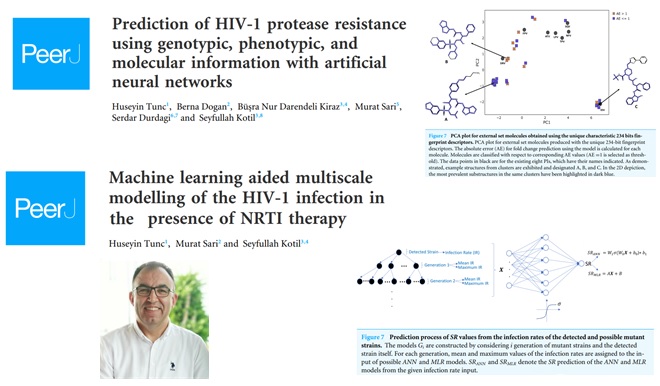
The studies entitled "Prediction of HIV-1 protease resistance using genotypic, phenotypic, and molecular information with artificial neural networks" and "Machine learning aided multiscale modelling of the HIV-1 infection in the presence of NRTI therapy" were led by Prof. Dr. Murat Sarı, a member of the ITU Department of Mathematics, and were published in the scientific journal PeerJ.
The first article discusses the use of machine learning models to estimate the resistance potential of molecules inhibiting the HIV-1 protease enzyme. The authors have used an artificial neural network (ANN) to predict drug resistance tendencies for eight protease inhibitors. The study has used genotype-phenotype data points for the inhibitors and created a classification problem to predict the ordered relationship of the inhibitors. The ANN model has been tested on an external dataset, which has shown good accuracy in predicting the drug resistance tendencies of the inhibitors. Overall, the ANN models can accurately predict the drug resistance tendencies of protease inhibitor pairs, which could help test new inhibitors with various isolates.
The second article discusses a mathematical modeling framework proposed to investigate the impact of existing mutations, timing of initiation, and adherence levels of nucleotide reverse transcriptase inhibitors (NRTIs) on the evolutionary dynamics of HIV strains. The authors combined the Stanford HIV drug resistance data with a multi-strain within-host ordinary differential equation (ODE) model to track the dynamics of the most common NRTI-resistant strains. The study found that the D4T-3TC, D4T-AZT, and TDFD4T drug combinations had higher success rates in preventing treatment failure and further drug resistance. The study also highlights the significant effect of undetectable mutant strains on the success/failure rates of the NRTI treatments. The improvement of multi-scale models could contribute to the understanding of the evolutionary dynamics and treatment options of HIV.
https://peerj.com/articles/14987/
https://peerj.com/articles/15033/